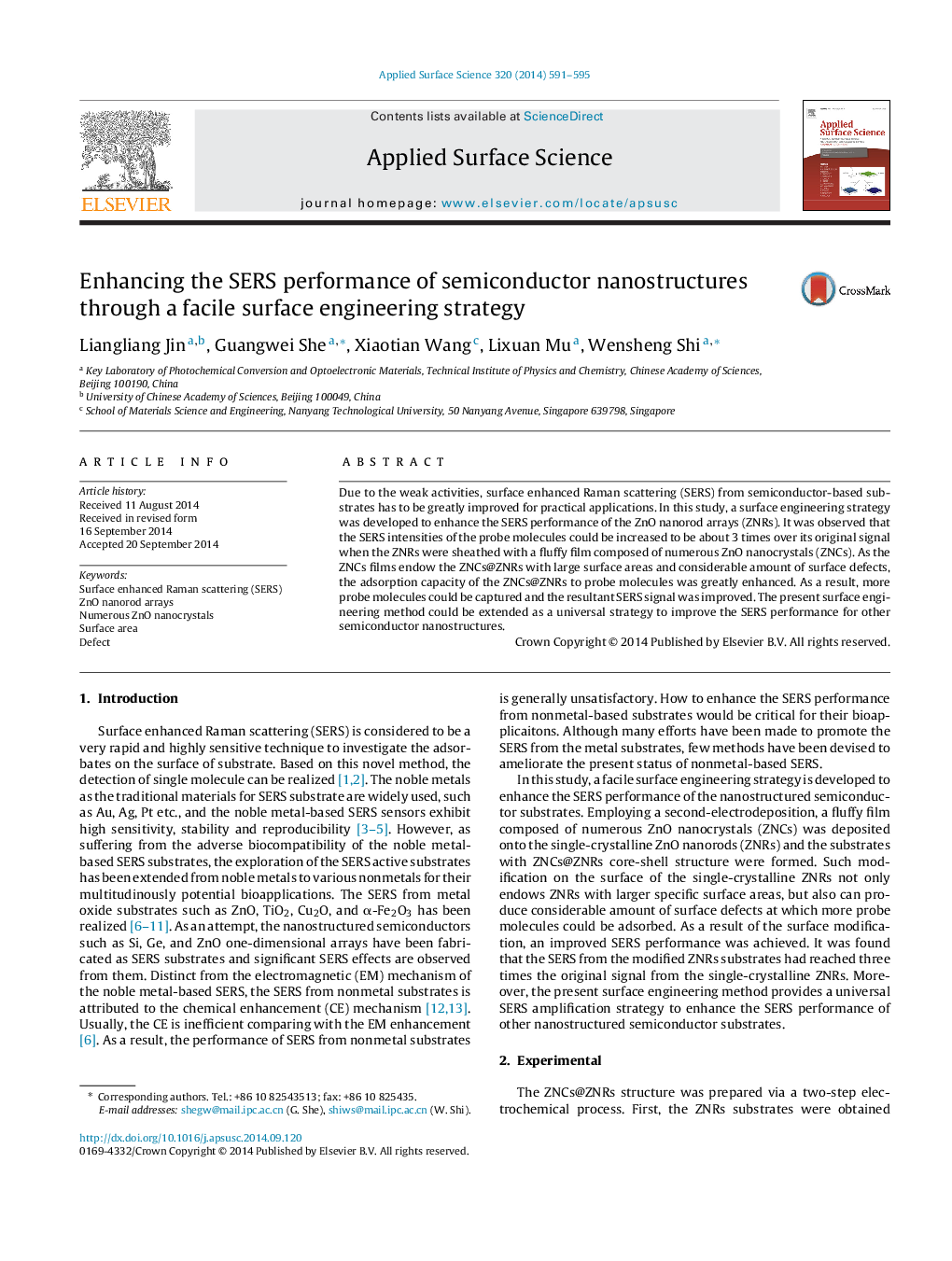| Article ID | Journal | Published Year | Pages | File Type |
|---|---|---|---|---|
| 5349669 | Applied Surface Science | 2014 | 5 Pages |
Abstract
Due to the weak activities, surface enhanced Raman scattering (SERS) from semiconductor-based substrates has to be greatly improved for practical applications. In this study, a surface engineering strategy was developed to enhance the SERS performance of the ZnO nanorod arrays (ZNRs). It was observed that the SERS intensities of the probe molecules could be increased to be about 3 times over its original signal when the ZNRs were sheathed with a fluffy film composed of numerous ZnO nanocrystals (ZNCs). As the ZNCs films endow the ZNCs@ZNRs with large surface areas and considerable amount of surface defects, the adsorption capacity of the ZNCs@ZNRs to probe molecules was greatly enhanced. As a result, more probe molecules could be captured and the resultant SERS signal was improved. The present surface engineering method could be extended as a universal strategy to improve the SERS performance for other semiconductor nanostructures.
Related Topics
Physical Sciences and Engineering
Chemistry
Physical and Theoretical Chemistry
Authors
Liangliang Jin, Guangwei She, Xiaotian Wang, Lixuan Mu, Wensheng Shi,
